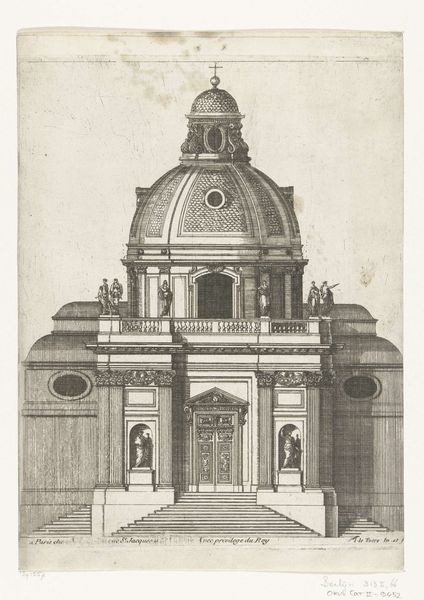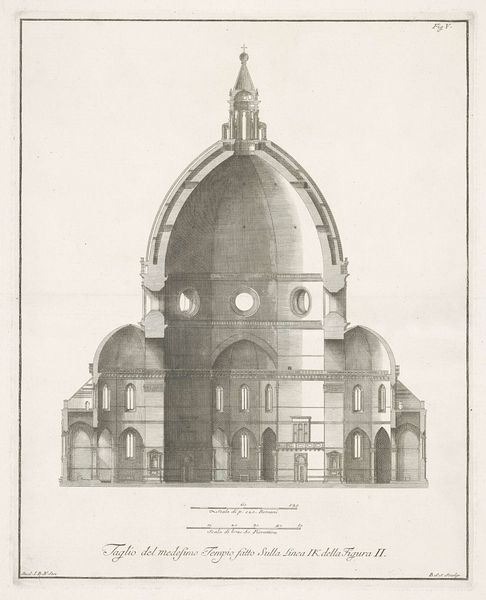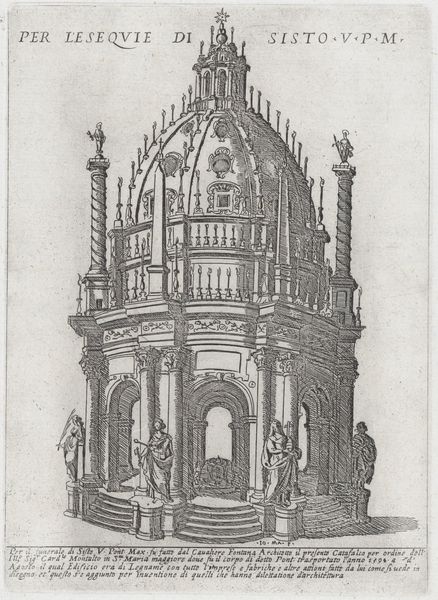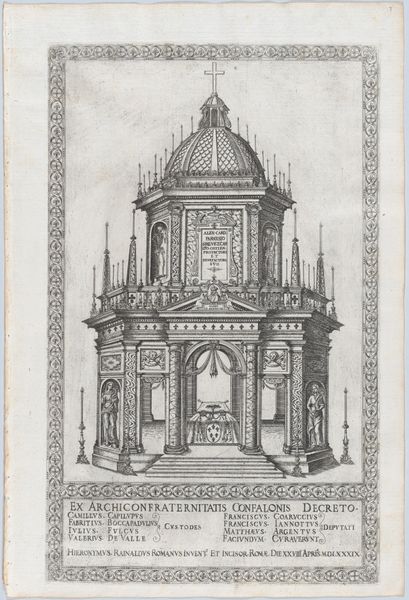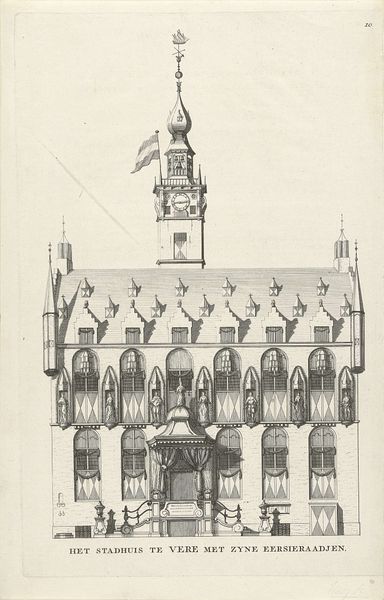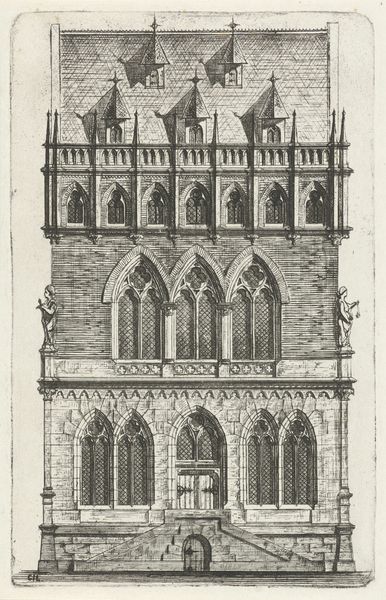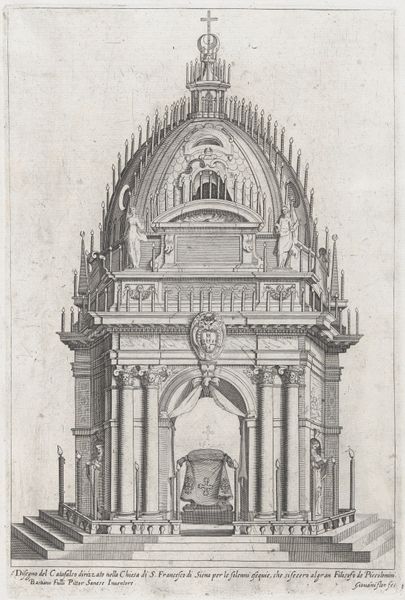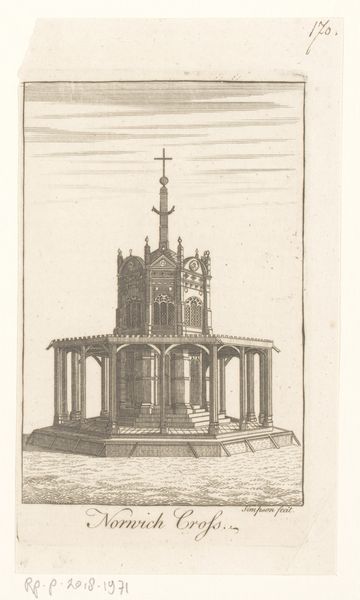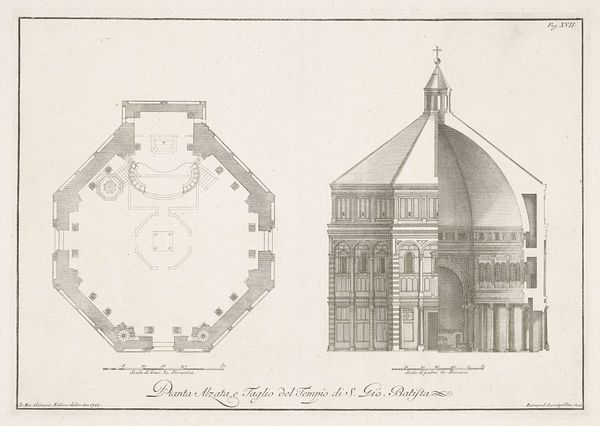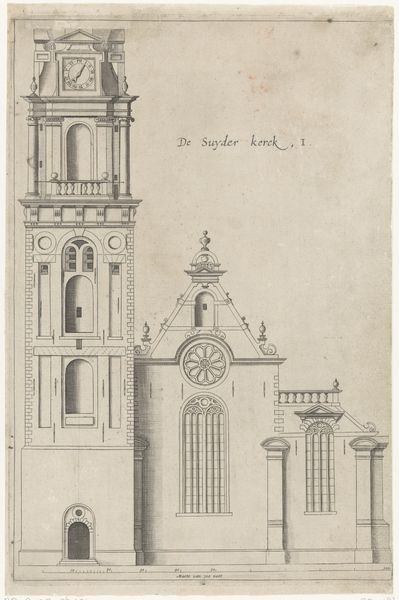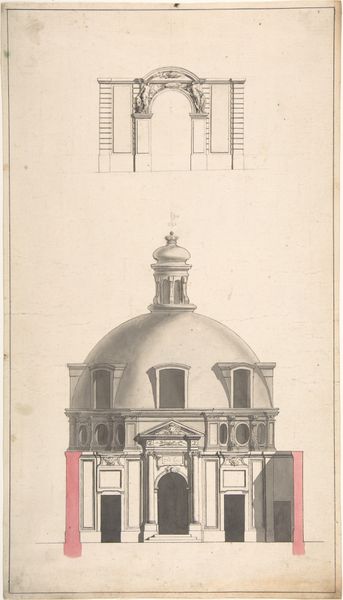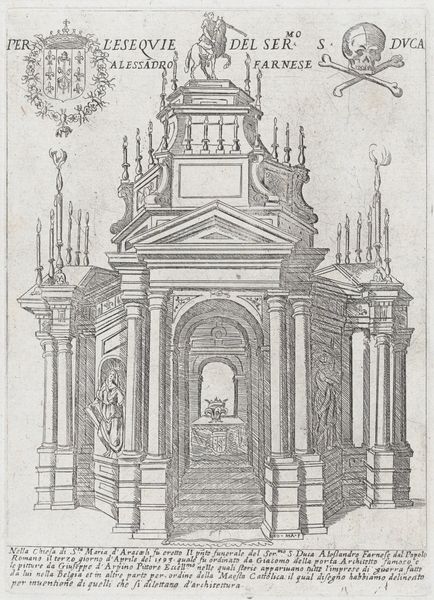
drawing, print, engraving, architecture
#
drawing
#
baroque
# print
#
form
#
line
#
cityscape
#
engraving
#
architecture
Dimensions: height 599 mm, width 442 mm
Copyright: Rijks Museum: Open Domain
Curator: Allow me to introduce "Facade van de Santa Maria del Fiore te Florence," an engraving created around 1755 by Bernardo Sansone Sgrilli. Editor: My immediate reaction is to the rigid, almost brutal linearity of the depiction. It's quite stark. Curator: Yes, Sgrilli meticulously details the architectural form with a disciplined use of line. Notice how he delineates each stone, each arch, creating a highly structured, almost mathematical representation of the facade. Editor: It feels devoid of life, doesn't it? Knowing this is a record of a demolished facade casts a pall over the whole thing. How does an image function as both documentation and an elegy? Curator: Indeed. The engraving serves as a document, a historical record of what was. Sgrilli's attention to detail immortalizes the design and offers a tangible link to the past. The composition adheres to Baroque conventions, emphasizing clarity and precision in its rendering of architectural elements. Editor: Looking at the gathering of people near the entrance, I wonder about their lives intersecting with this grand, doomed facade. How did its eventual destruction impact the urban fabric of Florence, and more importantly, the social narratives of its citizens? The human figures at the base feel very deliberately placed. Curator: They do give a sense of scale, emphasizing the monumentality of the structure. They also act as a framing device, directing our eye toward the intricate details of the lower facade. Editor: Perhaps Sgrilli invites us to reflect on themes of ephemerality, of institutional power, and the cyclical nature of creation and destruction inherent to cityscapes. Is there a political commentary embedded here regarding who has the power to build, and more importantly, to tear down? Curator: Interesting questions. For me, it is the sheer dedication to the architectural representation that defines the image. I find the overall precision very rewarding. Editor: Yes, a precision imbued, it seems, with regret. Curator: Perhaps the artist wanted to immortalize a monument so others would be able to see it. It provides an enduring image of this structure.
Comments
No comments
Be the first to comment and join the conversation on the ultimate creative platform.
